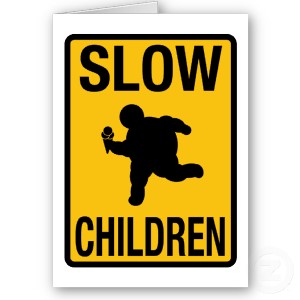Presidential Fitness Challenge: Are Kids Really Benefiting?
We can all recall our times during middle school and being put through the Presidential Fitness Challenge. This took place over a week’s time and included; sit-ups, sit and reach, pull-ups, pushups, and the DREADED mile run. I say dreaded because I was the fat kid that coasted in at about 13 minutes.
To give you a better idea, check this link for today’s current President’s Challenge.
https://www.presidentschallenge.org/
Current State of Our Youth
It is clear that the obesity epidemic is on the rise, as the CDC released their most recent statistics that revealed obesity rates having tripled since 1980. TRIPLED! The government has responded in evolving the past President’s Challenge to better aid in fighting youth obesity. Here is the mission statement of the President’s Council on Fitness, Sports, and Nutrition:
The President’s Challenge is a program of the President’s Council on Fitness, Sports, and Nutrition. The Council seeks to expand the availability of quality information regarding physical activity, sports, and good nutrition and to empower Americans of all ages, backgrounds, and abilities to adopt a healthy lifestyle through:
- Regular physical activity
- Participation in sports
- Healthy eating
This is all well and good, but where does physical fitness testing fall into the mission statement? Is there truly a need for physical educators to perform fitness tests? I say no, and for good reason.
Kids Mature at Different Rates
The President’s Physical Fitness Test is an indicator of who and who has not gone puberty. Biologically, kids mature at different rates. Some kids start at age 9 and can range to age 13. Kids who have hormonal changes earlier will develop physically before those who have not yet matured. Of course the kid in the 8th grade that is already shaving his beard can bang out 30 pushups! As an 8th grader, I was considered a “man-child” with a height of almost 6’0” and weighing in at around 285lbs. I was known for crushing quarterbacks and I could throw a discus over 150 ft. Looking back, who cares! I had matured at such early age, this should have been an expectation, not me exceeding expectations. I guess you could say I was an “early bloomer”.
The Fitness Test Serves as a Filter
Consider this scenario:
Student A is an 8th grade who has the biological age of a 6th grade student. During the physical fitness test, he/she is put on a spot light and performs poorly (perceived as poor) compared to his/her classmates. Student A is embarrassed and now dreads going to physical education class, because of the feedback of his/her classmates. Student A goes to high school, takes his/her ½ credit of required P.E. and never enrolls in a that class again.
The fitness test served as a filter for this student. Rather than emphasizing quantitative measures and teaching the student to be an advocate for exercise, we simply filtered that student and gave them a negative experience. The government combats these scenarios by offering a participation award which physical educators can print off of the website. THAT way, everyone feels like a winner.
The Fitness Test Doesn’t Teach Students How to Move
Curl-ups, pull-ups, endurance runs, sit and reach, and shuttle runs are all well and good, but are we actually teaching students how to be better movers? I would much rather students perform a written explanation on how to perform a pull-up versus being able to perform quantitatively. The bottom line, kids need to learn how to move better, before we (as physical educators) implement quantitative tests.
Advice for Physical Educators
As you can tell, I am passionate in reaching for change in our youths’ development. As a former physical educator, now turned strength and conditioning coach, here are a few things physical educators should change.
1) Get rid of fitness testing.
You could predict the top athletes by lining students up and looking at their physical development.
2) Teach students how to move efficiently and warm-up.
Teach students how to balance correctly, engage their core and glutes when performing pushups and prone bridges, and educate on how to warm-up properly!
3) Use writing as a way for all kids to meet expectations.
You have a kid that is weak and underdeveloped? Alter your assessment and have them explain in detail how to position their body and perform an exercise. Not only will it make your principal love you, but the student is prepared to move efficiently when he/she is developmentally ready!
4) Teach nutrition every day.
We cannot rely on parents to have kids eat healthy at home. Middle school students eat what their parents put in front of them. Rather than fighting to educate parents, why don’t we educate students on how to INFLUENCE their parents to eat healthy. If we want to change the obesity epidemic, nutrition must be a cross-curricular subject!
Closing Thoughts
Physical education should be put forth filters as the scope should be broad! We have to make every kid successful in some sort of way in class. You have a kid that can’t walk a chew bubble gum; Make them the best flag football official in the world! Not all kids will be varsity, collegiate, or professional athletes, but we can definitely teach them to be advocates of sport and exercise.



Jay great article. I think you should try and get something like this posted in the huffington post or somewhere were it can gain a lot more attention.